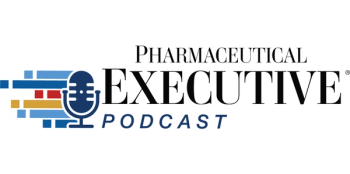"The Wegovy and orforglipron deals are a clear signal: if you want a voucher in a politically high-profile category, you will be expected to put real dollars on the table in the form of discounts or MFN-like guarantees. Firms that cling to the traditional launch-high and discount-later strategies may find themselves watching competitors collect vouchers and first-mover advantages."
Winners & Losers: What the First FDA Commissioner’s National Priority Vouchers Tell Us About Early Movers vs. Late Movers
The first wave of Commissioner’s National Priority Vouchers signals a fundamental shift in FDA competitiveness, rewarding companies that pair breakthrough science with affordability commitments, onshore manufacturing readiness, and the operational muscle to execute ultra-accelerated reviews.
Editor’s note: This article is part of a series providing industry expert perspectives on the implications of the Commissioner’s National Priority Voucher (CNPV) program.
A New Kind of Voucher and a New Competitive Landscape
The launch of the
Launched in June 2025, CNPV gives sponsors an ultra-accelerated 30- to 60-day review, but only if the therapy advances five national priorities: addressing public-health crises, delivering innovative cures, meeting unmet medical needs, strengthening on-shore manufacturing, and increasing affordability.
To qualify, companies must demonstrate early chemistry, manufacturing, and controls (CMC) readiness, credible pricing and access plans, and domestic or onshore manufacturing capacity.
Why the First 15 CNPV Awards Matter
With the
The first
For executives, the early message is stark: CNPVs are not just about great science. They reward the companies that have already built “voucher-ready” organizations.
Who Won: The First Two Waves of Voucher Recipients
The first nine vouchers went to a remarkably diverse group of products and sponsors.
According to FDA and HHS releases, the inaugural list included: Merck KGaA’s Pergoveris (infertility); Sanofi’s teplizumab (Type 1 diabetes); Regeneron’s gene therapy DB-OTO (genetic deafness); Achieve Life Sciences’ cytisinicline (vaping addiction); Revolution Medicines’ RMC-6236/daraxonrasib (pancreatic and lung cancer); Disc Medicine’s bitopertin (porphyria); Dompé’s cenegermin-bkbj (blindness); a domestically manufactured ketamine anesthetic; and an Augmentin XR antibiotic product selected specifically for U.S. manufacturing resilience.
Taken together, these programs cluster around three themes:
- High-burden chronic and serious conditions (Type 1 diabetes, infertility, cancer, deafness, porphyria).
- Access and affordability plays (cheaper IVF options, domestic injectable anesthetics and antibiotics).
- Platform or modality innovation (first-in-class gene therapy for deafness, novel oncology and hematology mechanisms).
On November 6, the FDA announced a
Here, the thematic clustering is even clearer:
- Obesity and metabolic disease: orforglipron and Wegovy, both tied to explicit pricing concessions for Medicare and Medicaid.
- Cancer and serious chronic disease: zongertinib, dostarlimab, Casgevy.
- Global public-health threats: bedaquiline for pediatric drug-resistant tuberculosis.
From an investor’s standpoint, the market impact is already visible: Disc Medicine and Revolution Medicines saw their stock prices jump sharply following voucher news, reflecting the perceived value of a one to two month FDA decision window and reduced regulatory risk.
“Why Them?” The Strategic and Operational Signals
Looking across the first 15 awards, four readiness signals stand out.
1. Clear Alignment With National Priorities
The Brookings analysis of the CNPV program emphasized five explicit FDA priorities: public-health crises, innovative cures, unmet needs, onshoring supply chains, and affordability. Every first-round winner checks at least one of these boxes, while most check several.
- Obesity/metabolic disease: Wegovy and orforglipron directly target the U.S. obesity crisis and the downstream cost burden of cardiometabolic disease.
- Cancer and gene-editing: RMC-6236, zongertinib, dostarlimab, Casgevy are high-impact oncology and genetic-disease assets aligned with “innovative cures” and “unmet need.”
- Access and affordability: Pergoveris (cheaper IVF), domestically manufactured anesthetics and antibiotics, and smoking/vaping cessation therapies all address cost, access, or utilization.
In other words, the winners are not marginal “nice to have” products. They are programs senior FDA leadership can defend as national priorities.
2. Affordability Pledges Front and Center
If traditional PRVs were agnostic to price, CNPVs are the opposite. Brookings notes that sponsors are explicitly encouraged to propose Most-Favored Nation (MFN) pricing or similarly aggressive affordability commitments as part of their bids.
That dynamic is easiest to see in obesity. The second-round vouchers for Wegovy and orforglipron coincided with
In the first cohort, HHS and FDA similarly highlighted Pergoveris as a lower-cost IVF competitor and underscored affordability themes in public remarks about the ketamine anesthetic and Augmentin XR antibiotic selections. Early movers in CNPV are the companies that were willing to lead on price, not fight to the last dollar.
3. CMC and Manufacturing Readiness Already in Place
The CNPV rules require early submission of the CMC section, 60 days before the official 30- to 60-day review clock starts, which effectively forces sponsors to front-load manufacturing readiness and inspection preparedness.
This favors companies that:
- Already operate U.S.-based or easily onshorable manufacturing.
- Have mature quality systems and inspection track records.
For example, Vertex’s Casgevy is being developed with a sophisticated, partly onshore manufacturing chain that has already navigated regulatory scrutiny in sickle-cell indications.
Zongertinib fits into Boehringer’s established oncology manufacturing network. Bedaquiline builds on J&J’s global TB footprint and WHO-aligned access infrastructure.
The pattern is similar in the first nine awards: augmentin XR and ketamine were selected because they are tied to domestic manufacturing of basic but strategically important therapies.
Early movers here are not necessarily the most innovative scientifically, they are the ones who already had capacity, quality, and tech transfer lined up in the United States.
4. Deep Regulatory Engagement and “Application Readiness”
Finally, many of the winners are companies that had been in active dialogue with FDA divisions well before the vouchers were granted. Brookings notes that the CNPV process begins with short written proposals, followed by private meetings and division-level nominations, with “application readiness” as a key selection factor.
Regeneron, Revolution, Disc, Vertex, and large incumbents like Sanofi and GSK are all seasoned regulatory operators. They know how to stage pre-submission packages, how to run mock inspections, and how to respond to queries within hours rather than weeks.
That competence is not glamorous, but in a 30- to 60-day review, it is the difference between using the voucher and watching it be deferred.
The Early CNPV Winners: Strategic Advantages That Compound
For the companies holding the first 15 CNPVs, the strategic advantages go far beyond shaving months off review time. A six- to nine-month head start in markets such as obesity, oncology, or gene-editing can:
- Bring hundreds of millions to billions of revenue forward in time.
- Lock in first-mover status, guideline inclusion, and payer contracts.
- Allow earlier accumulation of real-world evidence, which in turn shapes future label expansions and competitive positioning.
Market analysts have already noted how Disc Medicine and Revolution Medicines saw their probabilities of approval and valuations jump following voucher awards, precisely because regulatory risk and timing uncertainty fell.
Add in the reputational “regulatory goodwill” that comes with being in the inaugural group, and the first wave winners are building a compounding advantage.
Who’s Set Up for the Next Round?
If the first 15 vouchers define the early winners, who looks best positioned for future rounds?
Rather than trying to guess specific names, it is useful to look at three types of companies that appear strategically aligned with CNPV criteria.
1. Obesity and Cardiometabolic Leaders Beyond Lilly and Novo
Obesity is an explicit CNPV target area, and we are still early in the market’s evolution. Amgen, for example, is
AstraZeneca has built a Phase II obesity and weight-management pipeline, including oral GLP-1 agents (AZD5004), peptide therapies (AZD6234), and dual agonist combinations, and has signaled a strong interest in cardiometabolic disease as a strategic growth area.
If these companies pair strong efficacy data with credible affordability and onshoring plans, they are natural contenders for future vouchers in obesity and related chronic disease.
2. Oncology and Rare Disease Players With U.S. Manufacturing Depth
The selection of RMC-6236, zongertinib, dostarlimab, Casgevy, DB-OTO, and bitopertin shows that oncology and rare genetic/hematologic diseases will remain fertile ground for CNPV, if sponsors can manage CMC complexity in a compressed timetable.
Companies with established U.S. biologics or cell/gene manufacturing—think Bristol Myers Squibb in cell therapy, Roche/Genentech in oncology biologics, or bluebird bio and CRISPR-focused biotechs—are structurally advantaged if they decide to compete for future vouchers with application-ready assets and domestic production footprints.
3. Access-Focused and Domestic-Manufacturing Champions
Brookings has pointed out a tension in the CNPV design: generic sterile injectables and CDMOs—exactly the firms that could shore up U.S. drug supply—are often ineligible because they lack a novel drug pipeline.
Still, the inclusion of ketamine anesthetic and Augmentin XR signals that FDA is willing to use vouchers to secure domestic production of critical, high-volume drugs. That creates an opening for:
- Branded companies willing to re-shore manufacturing for essential medicines.
- Innovators developing lower-cost competitors to existing monopoly products (as with Pergoveris vs. high-priced IVF alternatives).
Companies that can credibly propose U.S.-based API and fill-finish capacity, coupled with MFN-style pricing, are natural candidates for the next wave.
Who Risks Being Left Behind?
The early CNPV experience also hints at who could become the “losers” in this new regime, not necessarily because their science is weaker, but because their operating model is misaligned.
Three risk patterns stand out:
- Science-rich, infrastructure-poor biotechs. Smaller firms with breakthrough biology but no capital for U.S. plants or aggressive pricing pledges may struggle to compete against large pharma’s ability to bundle affordability and onshoring promises into a voucher bid. Brookings explicitly warns that the CNPV’s negotiation structure may disadvantage smaller sponsors.
- Large companies slow to move on price. The Wegovy and orforglipron deals are a clear signal: if you want a voucher in a politically high-profile category, you will be expected to put real dollars on the table in the form of discounts or MFN-like guarantees. Firms that cling to the traditional launch-high and discount-later strategies may find themselves watching competitors collect vouchers and first-mover advantages.
- Manufacturing networks that remain heavily offshore. Companies still reliant on fragile ex-U.S. supply chains for critical modalities, especially injectables and biologics, will find it hard to satisfy the onshoring expectations embedded in CNPV selection criteria.
None of these are permanent disadvantages. But they require deliberate strategic moves immediately on CMC, capacity, and pricing to avoid being structurally late to the voucher game.
Strategic Takeaways for Pharma Leaders
From a distance, the first 15 CNPV awards look like a policy experiment in speeding up reviews. Up close, they are something more: a sorting mechanism that rewards early movers in operating model transformation, not just drug discovery.
Several implications emerge for executives:
- CNPV success is a cross-functional sport. Regulatory affairs cannot win a voucher alone. Manufacturing, quality, supply-chain, HEOR, and pricing must be engaged at the proposal stage.
- Affordability is now a source of competitive advantage. Willingness to lead on price, especially for high-visibility categories like obesity, has become a gateway to faster regulatory decisions and earlier revenue.
- U.S. manufacturing is moving from “nice to have” to “eligibility criterion.” Investment decisions in plants, CDMO partnerships, and tech platforms should be made with CNPV eligibility in mind, not just cost of goods.
- Being early matters. As more companies build voucher-ready capabilities, the bar for future rounds will only rise.
The early winners of Lilly, Novo Nordisk, Vertex, GSK, J&J, Boehringer, Regeneron, Sanofi, Merck KGaA, and their smaller peers, have already captured more than accelerated timelines. They have signaled to the FDA, investors, and competitors that they are willing to compete on a new playing field where speed, affordability, and domestic resilience are tightly coupled.
For everyone else, the choice is becoming increasingly binary: adapt your operating model to the CNPV era or accept that you may be competing as a late mover in markets where the real game was decided months earlier, in a voucher proposal rather than a PDUFA date.
About the Author
Thani Jambulingam, PhD, is a professor of food, pharma, and healthcare business at Saint Joseph’s University’s Erivan K. Haub School of Business. He can be reached at tjambuli@sju.edu.
Newsletter
Lead with insight with the Pharmaceutical Executive newsletter, featuring strategic analysis, leadership trends, and market intelligence for biopharma decision-makers.





